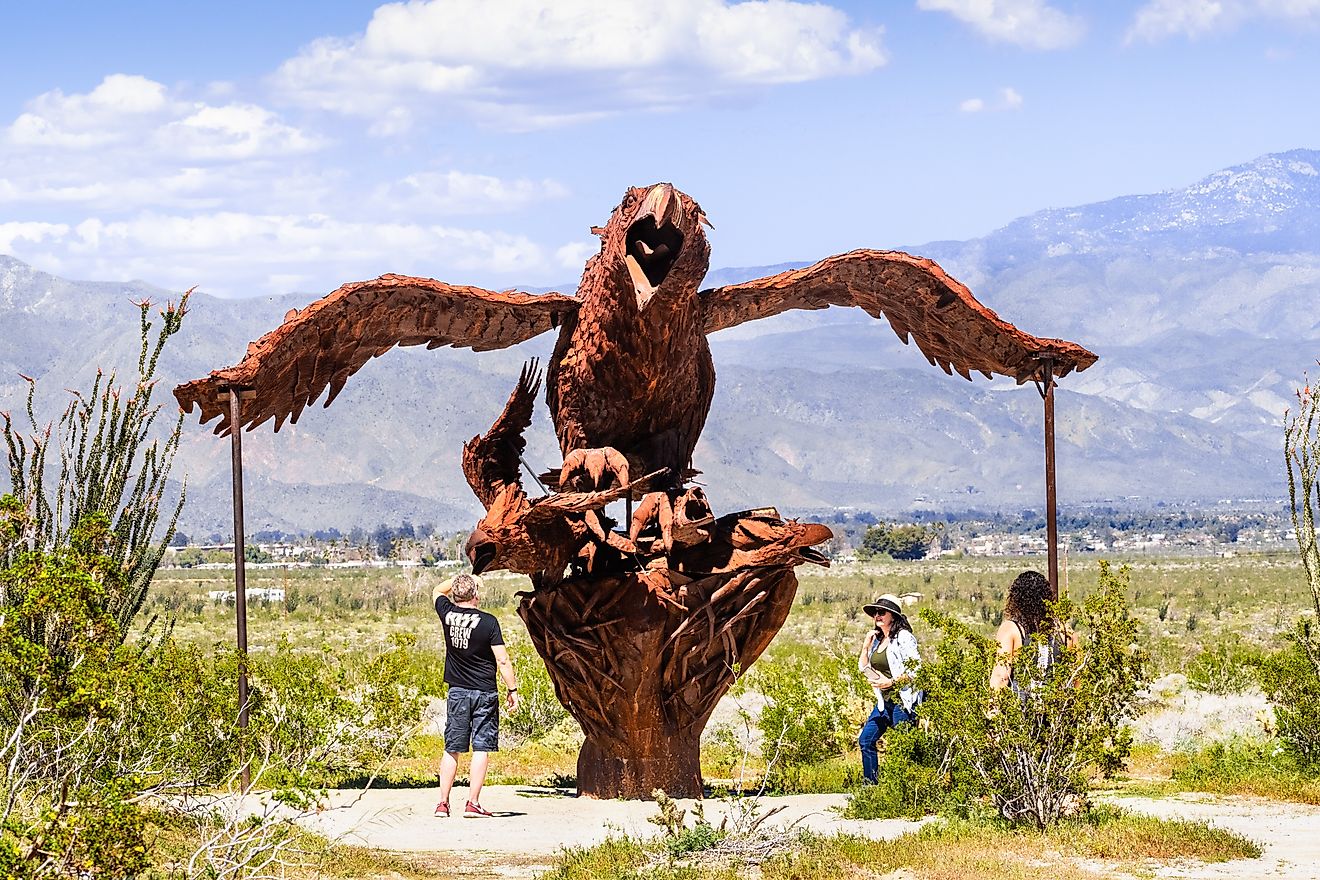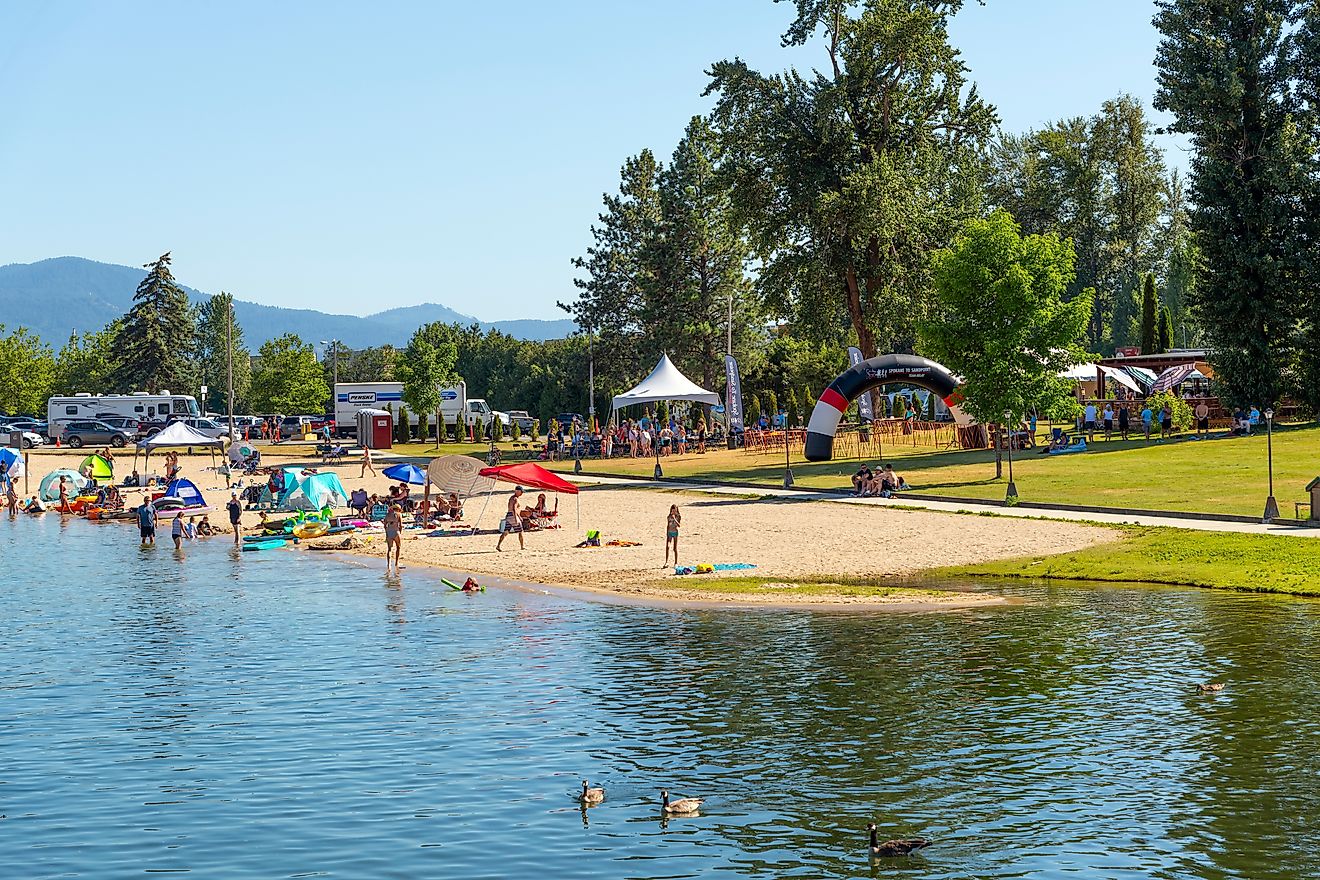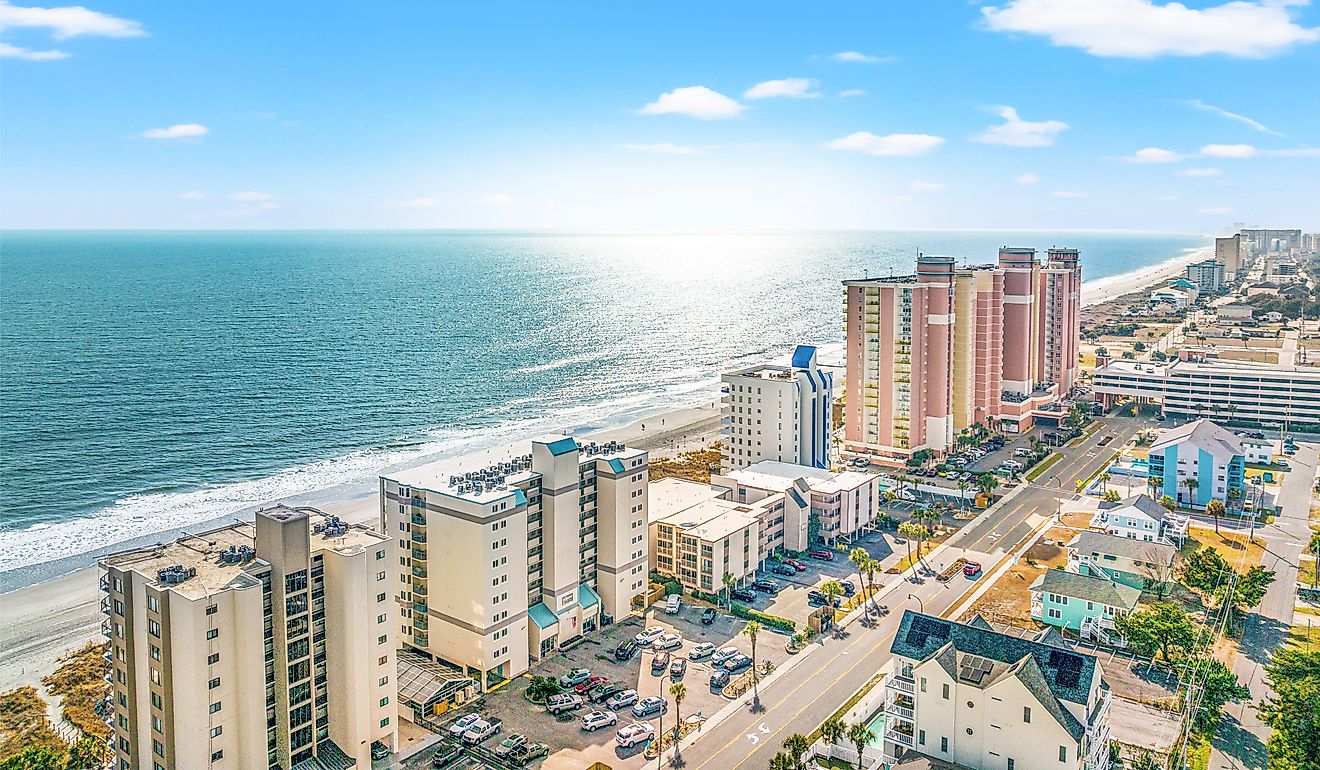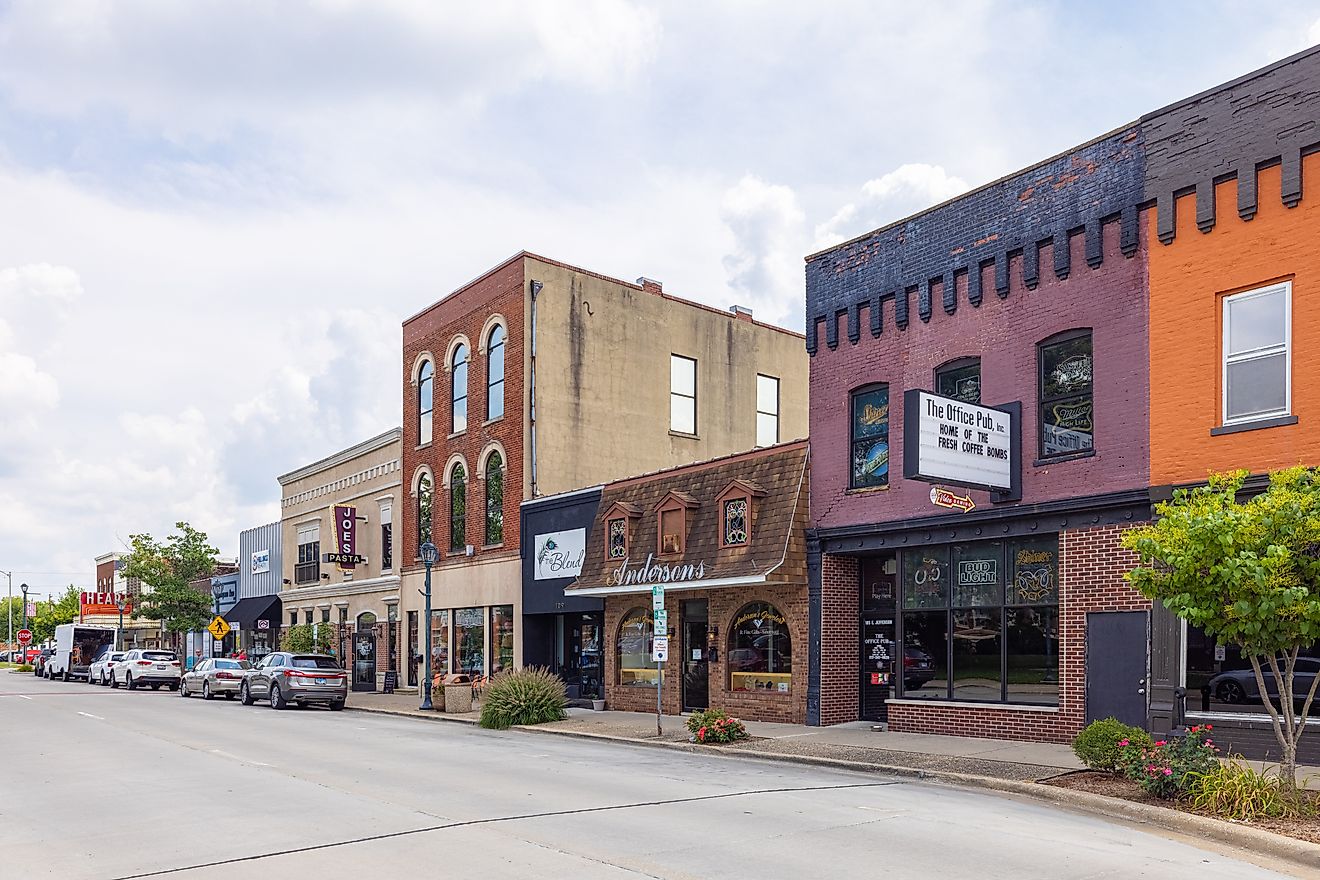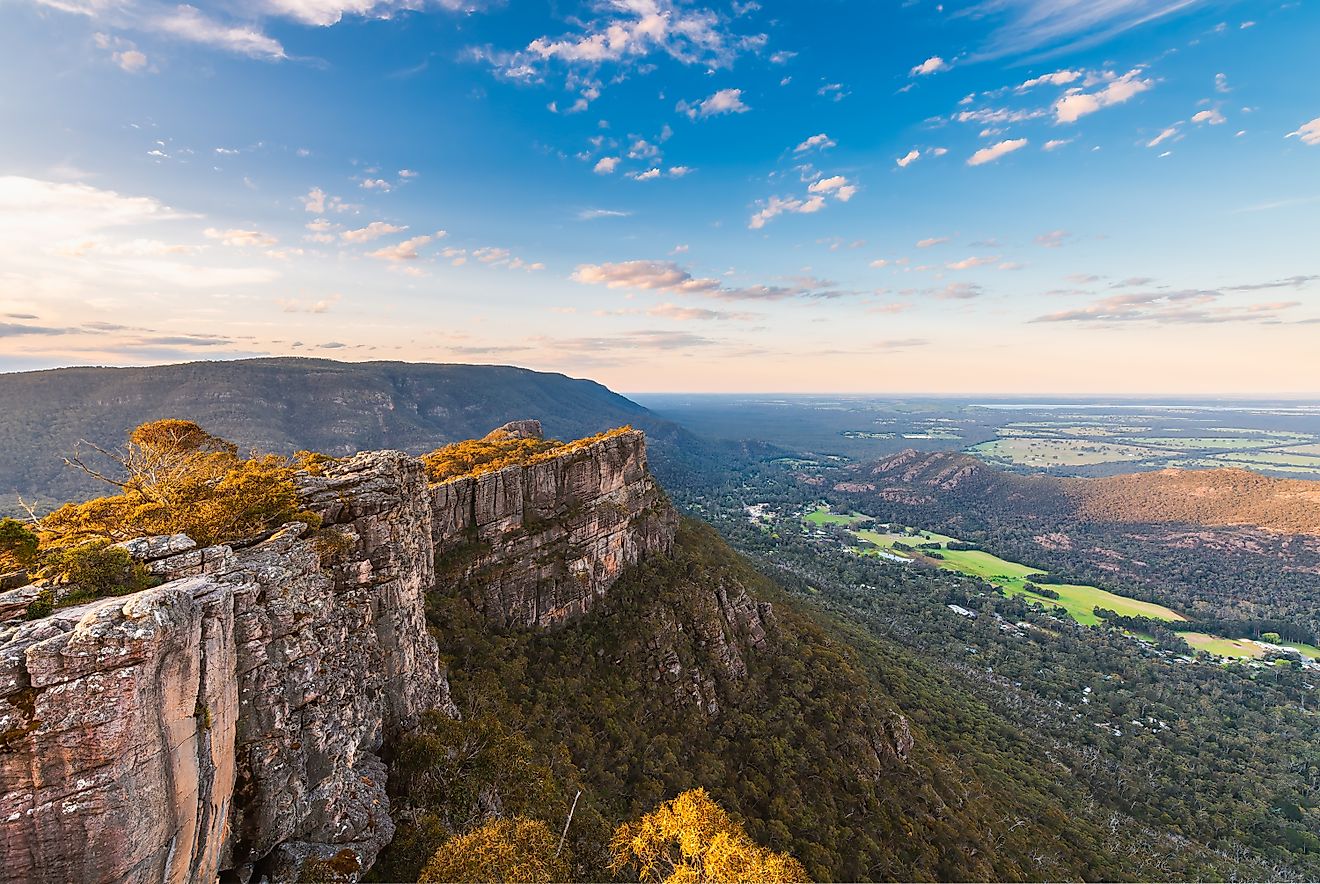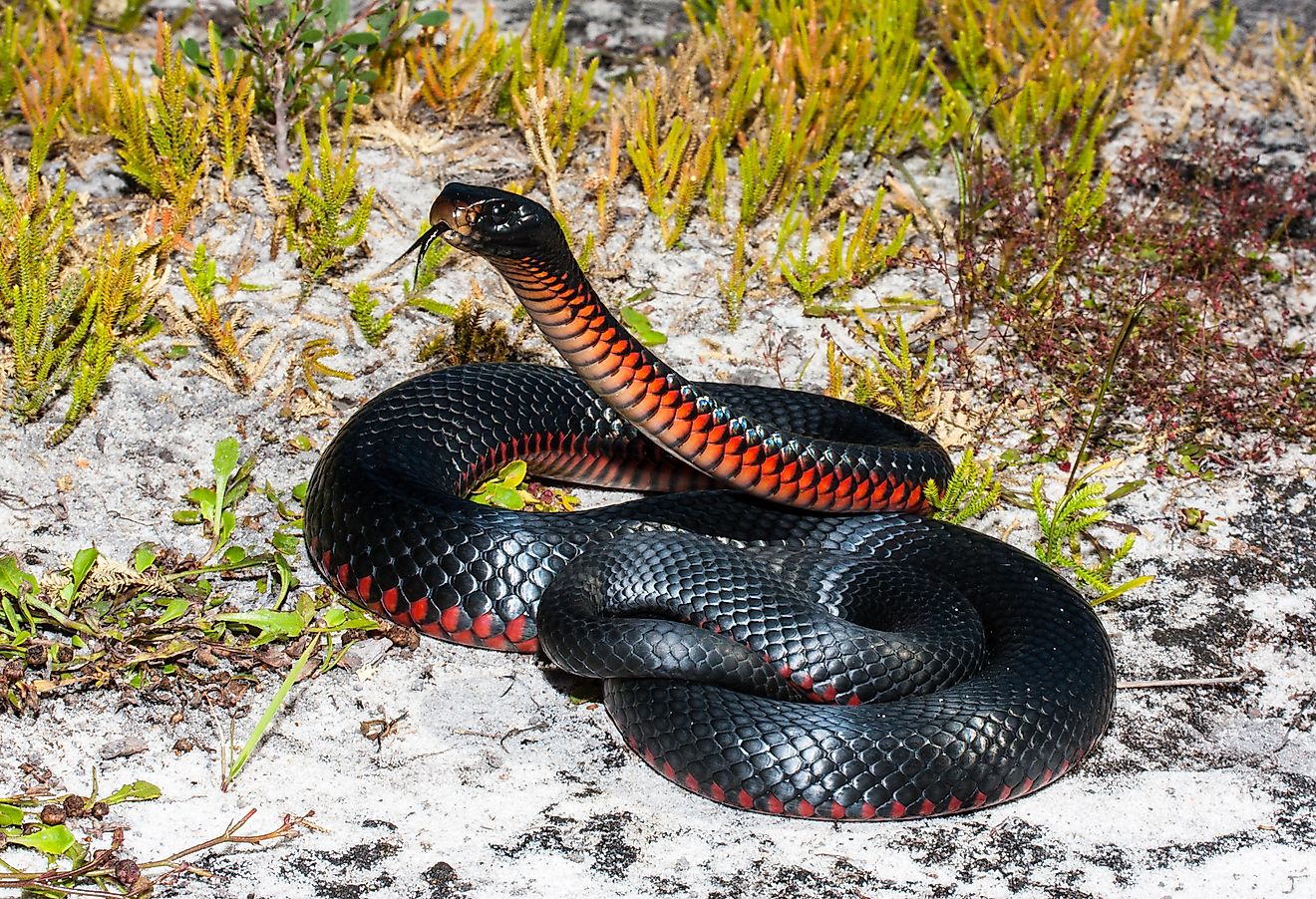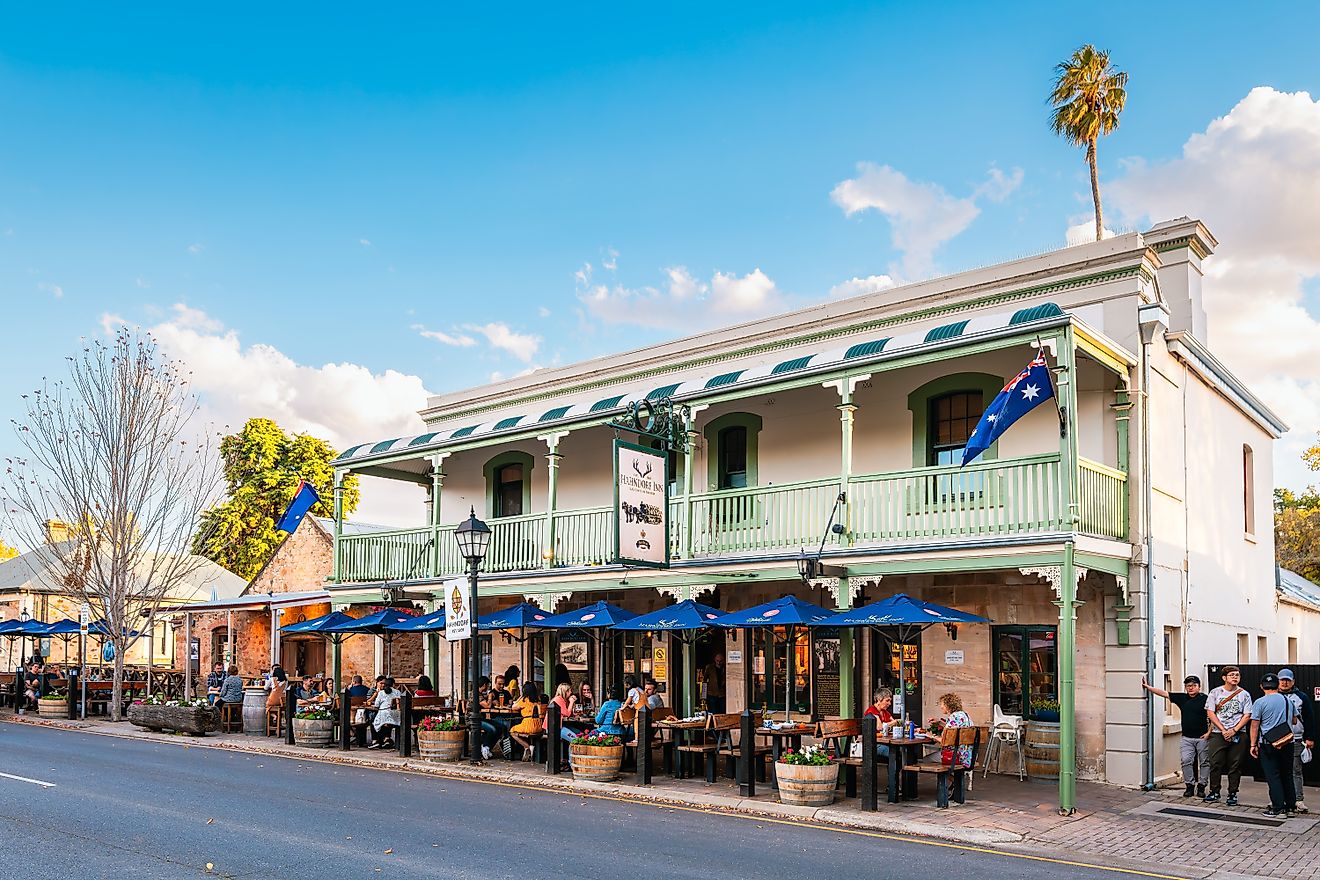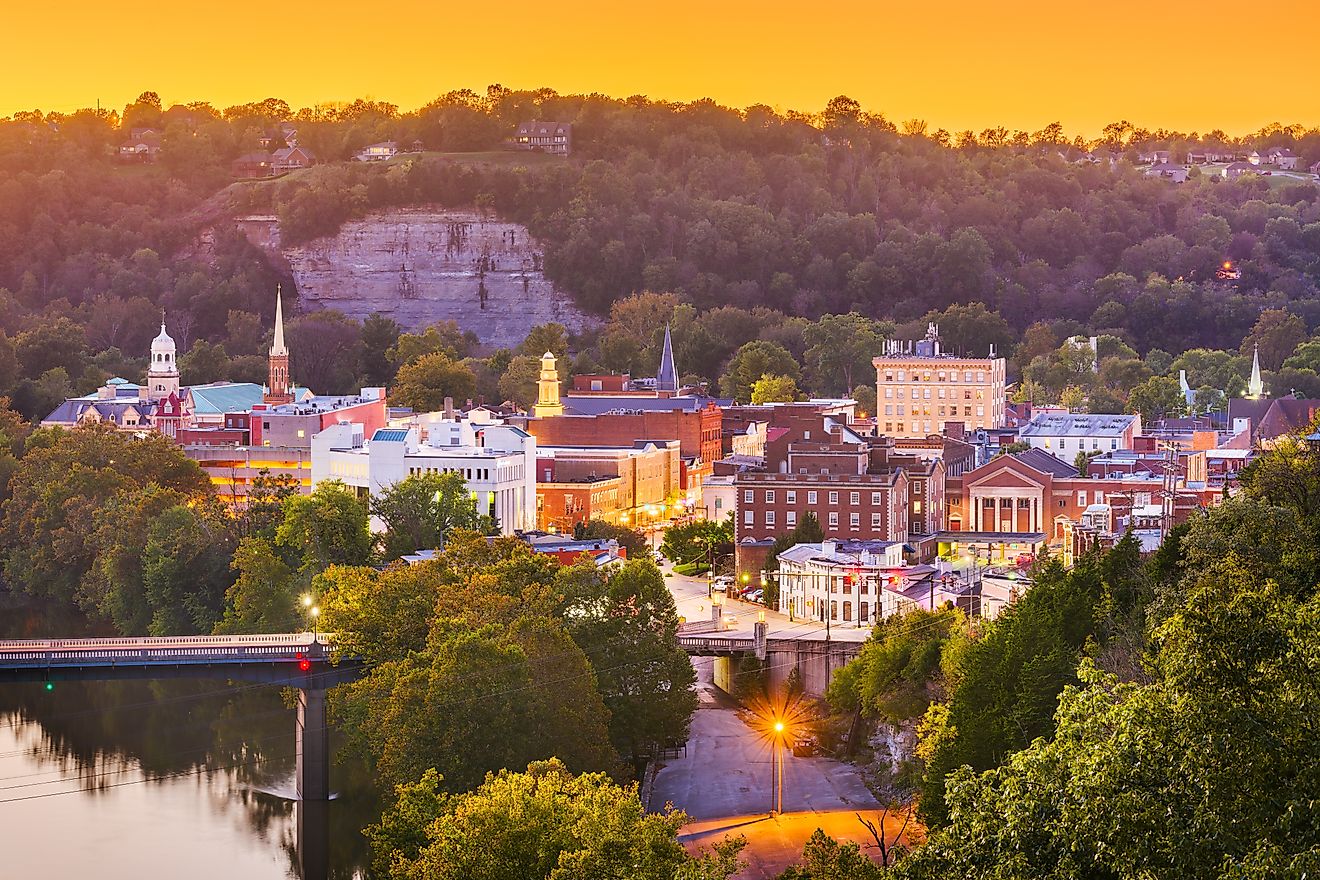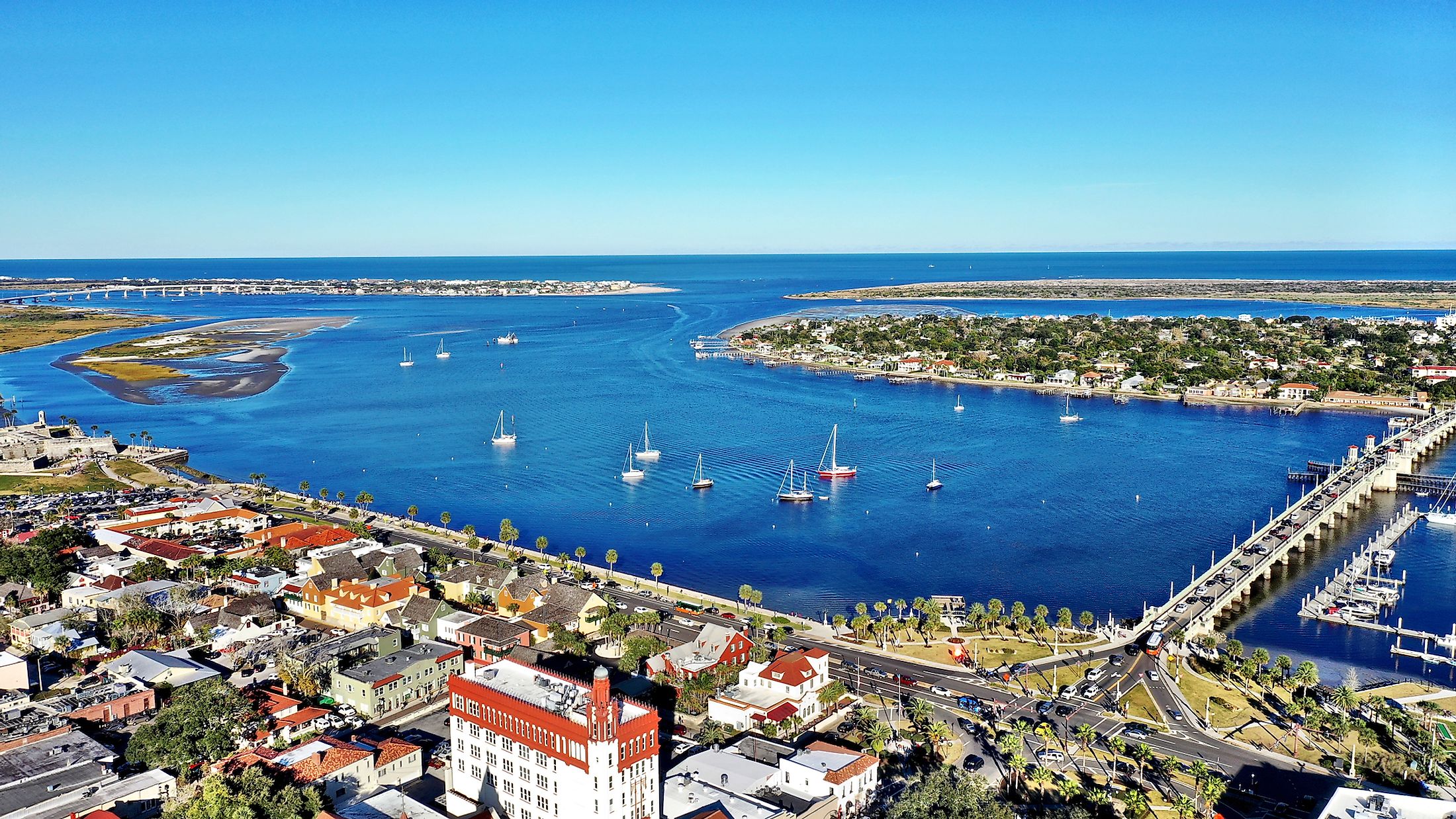
St. Augustine, Florida
St. Augustine is a small city situated in St. Johns County, on the Atlantic Coast of the US State of Florida. St. Augustine is considered the Nation’s oldest city and is the oldest European settlement that has been continuously inhabited in the contiguous United States since 1565. The city forms a part of the Jacksonville metropolitan area and the First Coast region of Florida. The rich heritage and unique scenery attract many visitors to St. Augustine, making it a popular tourist destination.
Geography Of St. Augustine
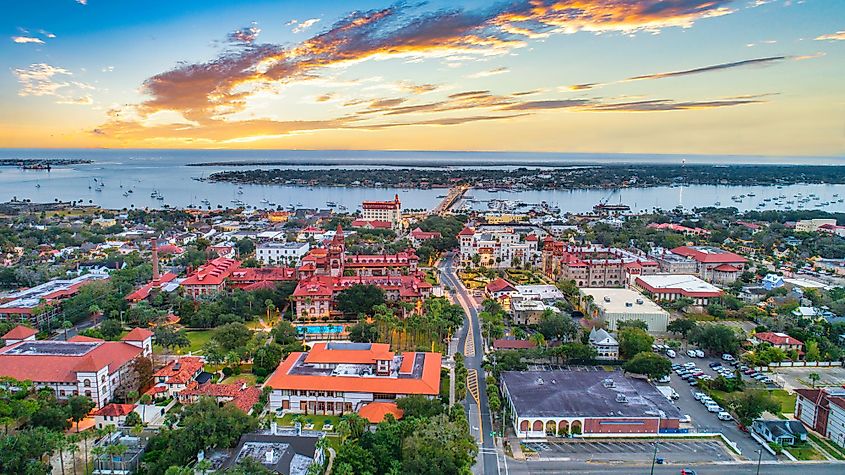
The city of St. Augustine covers a total area of 27.8 sq. km, of which 6.1 sq. km is occupied by water and 21.7 sq. km is occupied by land. St. Augustine is situated on the northeastern coast of Florida, on a peninsula between the saltwater rivers of Matanzas and Saint Sebastian. The 37km long Matanzas River forms a part of the Intracoastal Waterway and provides access to the Atlantic Ocean via the river’s St. Augustine Inlet.
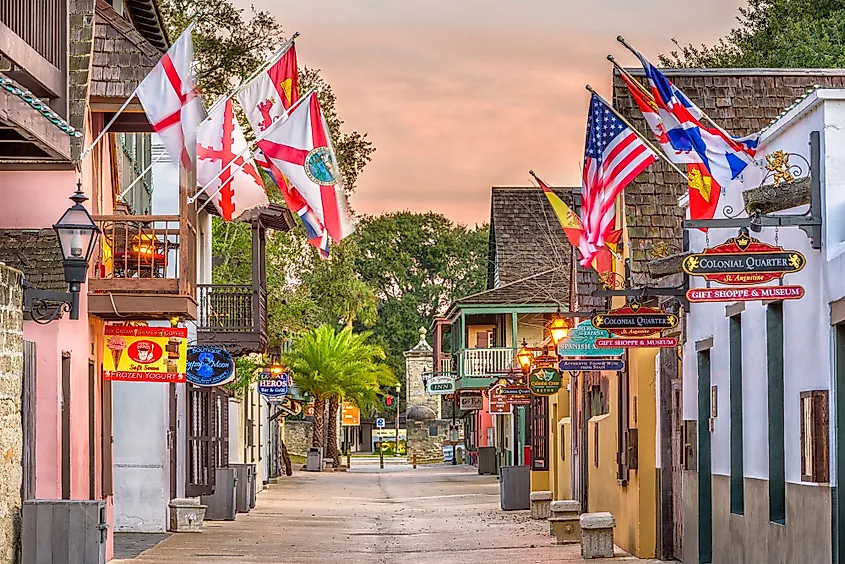
The city of St. Augustine serves as the county seat of Florida’s St. Johns County and is administered by a city commission form of government. The visitors to the city can stroll along the brick-lined streets and witness the centuries-old buildings, hidden courtyards, horse-drawn carriages, etc. The tourists can also visit the city’s famous hotels, bars, restaurants, world-class art galleries, boutiques, shops, theatres, and 67.5km of gorgeous Atlantic beaches, including the well-known Vilano Beach, Crescent Beach, St. Augustine Beach, etc.
Climate
As per the Köppen climate classification, St. Augustine experiences a humid subtropical climate, with hot summers and mild, cool winters. The hot season lasts from May to September, with August being the hottest month having an average high temperature of 31.6°C and a low temperature of 23.8°C. The cold season lasts from December to March, with January being the coldest month having an average low temperature of 8.8°C and a high temperature of 18.8°C. The hot and unstable tropical air pumped in by the Bermuda High-pressure system from the Gulf of Mexico and the Bahamas helps create daily thundershowers in St. Augustine during the hot summer months. St. Augustine has 223 sunny days per year and receives an average of about 50.64 inches of rainfall annually.
Demography And Economy Of St. Augustine
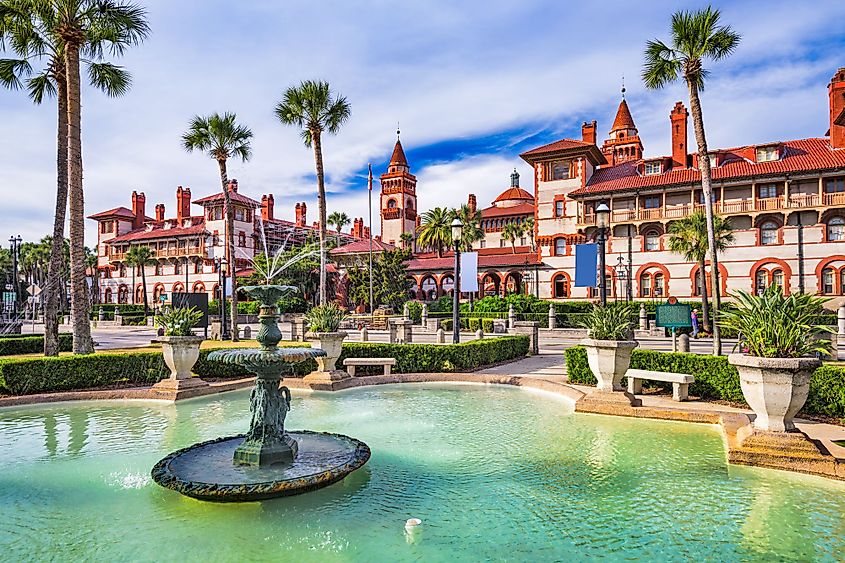
As per the latest 2020 United States Census, about 14,329 people live in the city of St. Augustine. The city’s population has increased since the 2010 census, which showed that the city was home to 12,975 people. About 83.5% of the city’s population is considered White, followed by the African Americans at 11.8%, American Indians at 0.4%, Asians at 0.8%, Native Hawaiians at 0.1%, two or more races at 2.5%, and the Hispanic group at 6.2%. The census also revealed that there are 5,852 households with a median household income of $54,468. The per capita income for the city was $34,086. The economy of St. Augustine is mainly driven by tourism, sport fishing, services, and various manufacturing industries.
Tourist Attractions In St. Augustine
Castillo de San Marcos
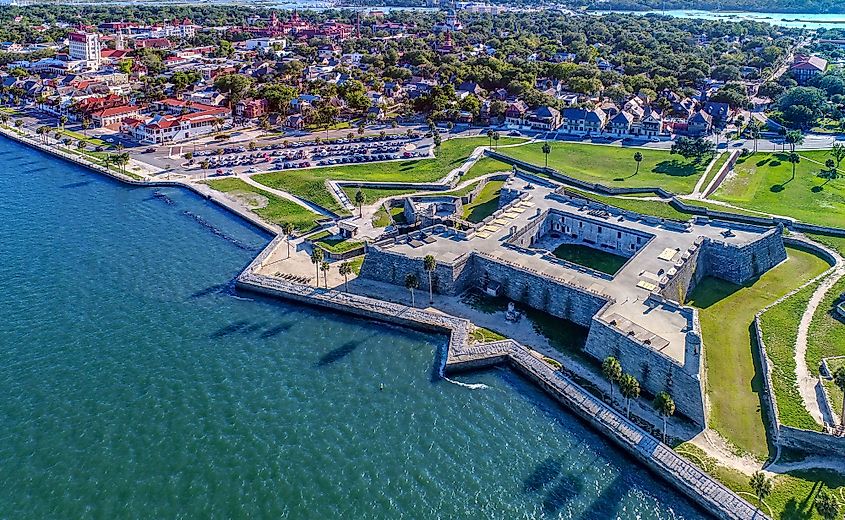
Located in the city of St. Augustine on the western shores of the Matanzas Bay is Castillo de San Marcos, which is considered to be the oldest masonry fort in the continental United States. As per historical sources, the Governor of Spanish Florida, Francisco de la Guerra y de la Vega, ordered the fort’s construction, which began in 1672 as per the designs of the Spanish engineer Ignacio Daza. Occupying a land area of only 0.08 sq. km, the Castillo de San Marcos fort is a masonry star fort that has been built using a stone called “coquina.” The fort played a vital role during the struggle between the Spanish and the British forces, and after the British acquired Florida, the fort was renamed Fort St. Mark. After the United States acquired Florida, the fort was renamed in honor of General Francis Marion, the American Revolutionary War hero as Fort Marion. Since then, the fort has been used as a military prison. In 1924, the fort was declared a National Monument, and in 1933, the fort’s ownership was handed over to the National Park Service. An Act of Congress restored the fort’s original name “Castillo de San Marcos” in 1942.
Fountain of Youth Archaeological Park
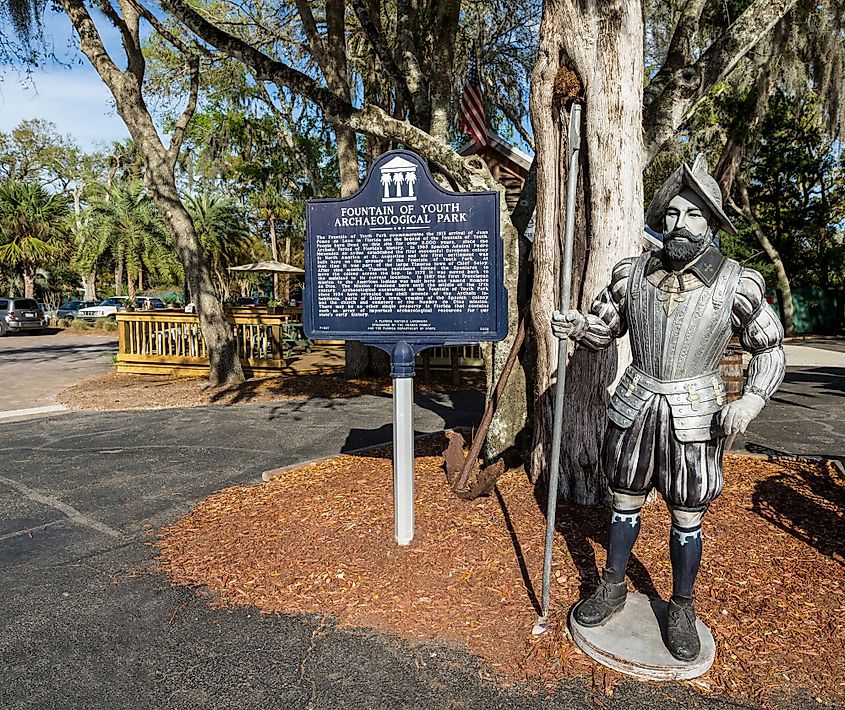
Covering an area of 61,000 sq.m, the Fountain of Youth Archaeological Park is a privately owned park located along the Hospital Creek in St. Augustine. The park is believed to be the site where the Spanish explorer Ponce de Leon first landed, although no substantial evidence has been found to validate this claim. In 1927, a Georgia resident named Walter B. Fraser purchased the park, and in the 1930s, he organized the city’s first formal restoration movement that later became the St. Augustine Preservation Board. In 2016, the Fountain of Youth Archaeological Park was added to the National Register of Historic Places.
Markland Mansion
Also referred to as the Andrew Anderson House, Markland is a historical mansion located at 102 King Street in St. Augustine. The mansion was built in 1839 in the Greek Revival architectural style, by the New York doctor Andrew Anderson Sr. In 1887, a part of the land to the east of the mansion was sold by Dr. Andrew Anderson Jr., to the American industrialist Henry Morrison Flagler for building the Ponce de Leon Hotel. The mansion was later sold to Flagler College. On December 6, 1978, the Markland Mansion was added to the National Register of Historic Places.
Bridge of Lions
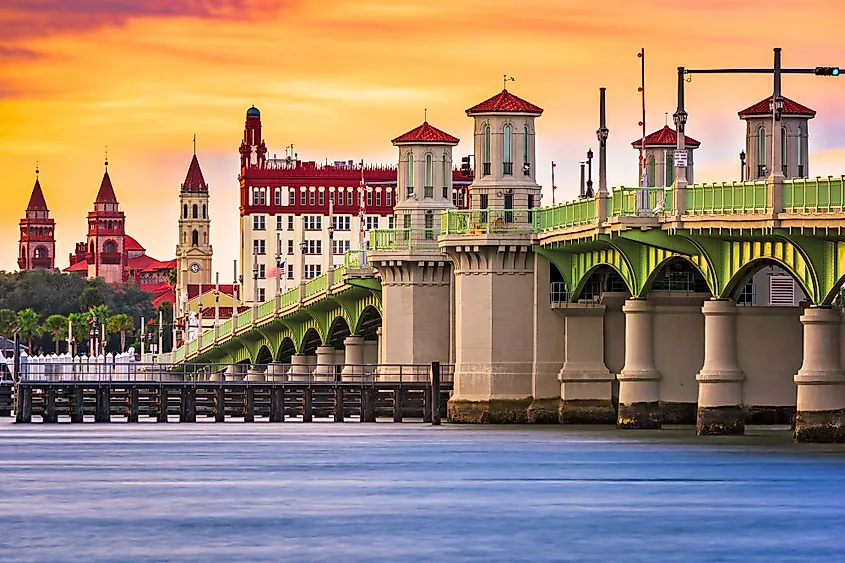
The Bridge of Lions is a 471m long double-leaf bascule bridge spanning the Intracoastal Waterway in St. Augustine. The bridge forms a part of the State Road A1A that connects the city with Anastasia Island across Matanzas Bay. The bridge is maintained by the Florida Department of Transportation and has also been added to the National Register of Historic Places.
St. Augustine Alligator Farm Zoological Park
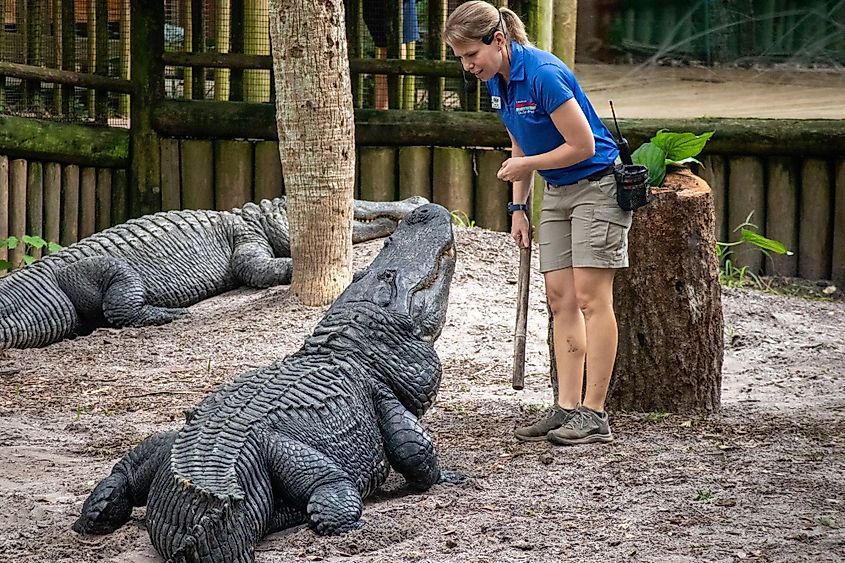
Opened on May 20, 1893, the St. Augustine Alligator Farm Zoological Park located on St. Augustine Beach is one of Florida's oldest continuously running attractions. The Zoological Park houses about 24 species of crocodilians along with a variety of other reptilian, avian and mammalian species. The park also features various exhibits, educational demonstrations, and animal performances. The St. Augustine Alligator Farm was designated as a U.S. Historic District on September 10, 1992.
Brief History Of St. Augustine
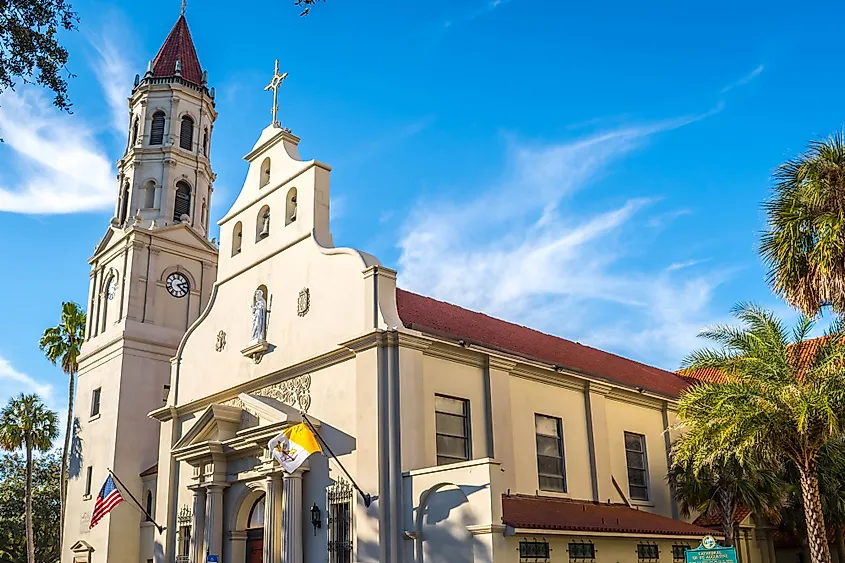
The Spanish Admiral Pedro Menendez de Aviles founded the settlement on September 8, 1565, and named it “San Agustin.” It is believed that his fleet, which bore settlers, supplies, and troops from Spain, first noticed the lands of Florida on August 28, which is regarded as the feast day of Saint Augustine. King Philip II of Spain authorized Menendez’s expedition to Florida on condition to settle the region as an “adelantado” of King Philip and destroy the French outposts. Soon after the Anglo-Spanish War began, the Spanish settlement of St. Augustine was plundered by the English privateer, Sir Francis Drake. In November 1702, after failing to capture the fort of Castillo de San Marcos, the settlement was burned by James Moore, the Governor of Carolina. The settlement was once again besieged in 1740 by General James Oglethorpe, the Governor of the British Colony of Georgia. As per the 1763 Treaty of Paris, the Spanish ceded Florida to Great Britain, and St. Augustine became the capital of British East Florida. In due course, the British ceded Florida back to Spain as per the 1783 Treaty of Paris, and St. Augustine continued to be the capital of Spanish Florida. The city also served as a refuge for the loyalists in the American Revolutionary War and a prison for Seminole prisoners during the Seminole Wars.
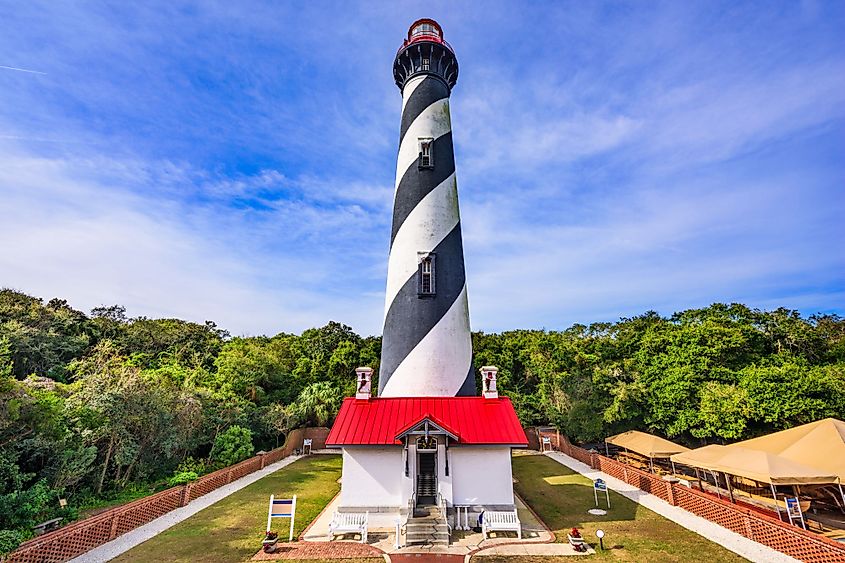
In 1861, after the American Civil War began, Florida became a part of the Confederacy, and for the next fourteen months, St. Augustine remained under Confederate forces. In 1819, as per the Adams-Onis Treaty, Florida was ceded to the United States by Spain, and St. Augustine was designated as the capital of the Territory of Florida. In the later years, the city served as the home for the St. Augustine Movement, which was led by the civil rights leader Robert Bagner Hayling. Mr. Hayling also invited Martin Luther King Jr. for assistance in the movement. It is believed that the St. Augustine Movement played a vital role in generating national sympathy and in the subsequent passing of the Civil Rights Act of 1964 and the Voting Rights Act of 1965 in US Congress. In 2015, the city of St. Augustine celebrated the 450th anniversary of its founding.
